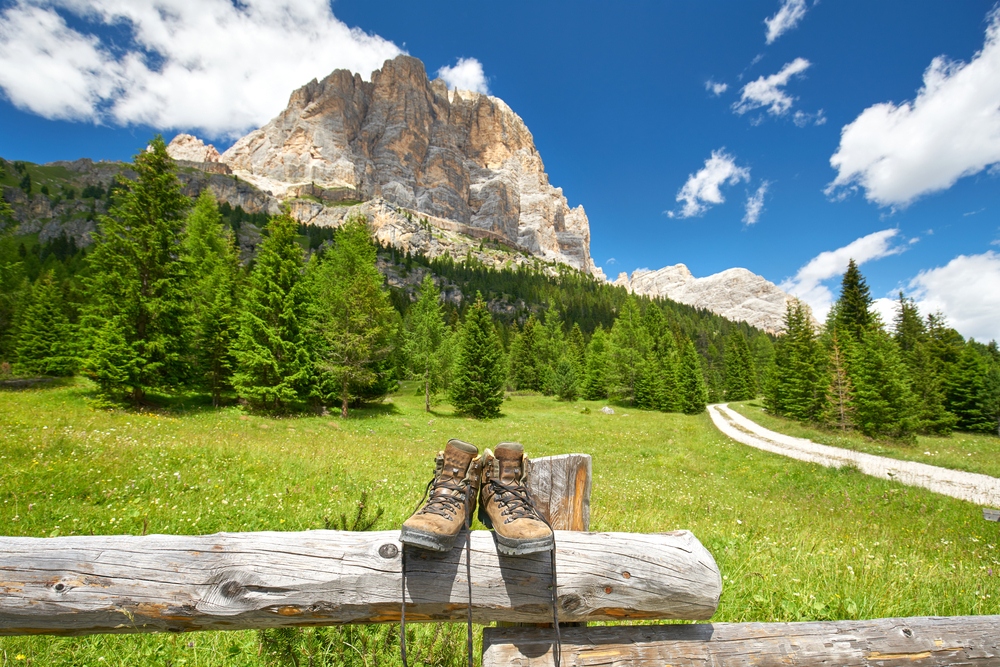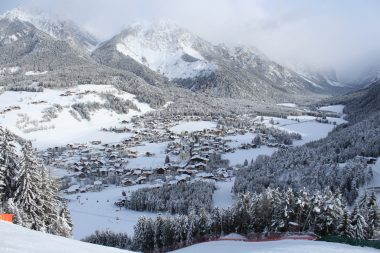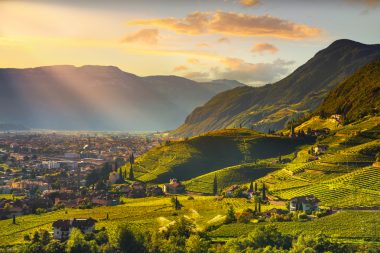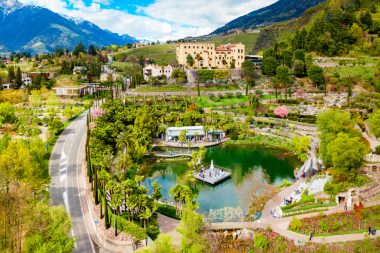
Hardly any other part of Central Europe has such a long and interesting history as South Tyrol. You can still see that today. After all, the area belongs to Italy and to one of the most prosperous regions not only of the country itself, but even within the European Union. Until 50 years ago, people lived mainly from agriculture. Today, it is above all the services and tourism that shape the country and its people. In South Tyrol, they have managed the balancing act between comprehensive hospitality and insistence on traditions.
For holidaymakers, the area is in most cases mainly associated with skiing holidays. Located in the middle of the Alps, South Tyrol offers some of the most beautiful ski resorts in Europe and can look forward to millions of visitors from all over the world every year. But this is only a part of this special region at the northern tip of Italy. The famous serpentines of the Alps can also be found here and lead through a country that is wonderfully green. Despite the importance of tourism, South Tyrol has not lost its own charm to this day. This can be seen in the landscape but also in the people, who, by the way, continue to be mainly associated with German-speaking countries.
What can visitors expect?

The South Tyroleans like to talk about the fact that their small country – yes, that’s what it is officially called – is located on the sunny side of the Alps. And indeed, once you have left the mountains behind, the charm of northern Italy and the path to the Balkans lie ahead of you. But there is actually no good reason to leave South Tyrol, because here you will find everything you could wish for for a great holiday. By the way, this is especially true for the time outside the ski season – after all, the area is only too often reduced to its breathtaking slopes and snow-capped mountains.
South Tyrol has a long history behind it. Tyrol was once handed over to Austria , only to be divided for a short time during the time of Napoleon. After all, it was the two world wars that ensured that South Tyrol was officially awarded to Italy, but little changed in the culture of the area. Even today, the German-speaking population dominates. No wonder, after all, South Tyrol officially belongs to the Bavarian-Austrian cultural area to this day and this can also be seen in a large part of the traditions. The people, the cuisine and the culture are strongly reminiscent of the brothers and sisters in the north.
However, you won’t find large cities. With the capital Bolzano, there is a small center of the area in the middle of South Tyrol, but in fact the nearest major cities with Munich and Milan are some distance away. But that’s not a disadvantage. Many of the small towns, but also Bolzano , have excellent opportunities for shopping, recreation, transport and, of course, accommodation. However, it is above all the strongholds of tourists that attract the most visitors.
South Tyrol in summer – what is there to discover?

Most holidaymakers are of course drawn to South Tyrol in winter, but the country also has a lot to offer in summer. South Tyrol has managed the balancing act between wellness demands and active holidaymakers, who come to the country at the same time for different reasons. Luxury offers in a hotel, accommodation for a long hiking holiday on the other side of the mountain. Between the peaks of the Dolomites and vineyards, there are many a beauty to discover away from the snow.
- Hiking: Over 17,000 kilometres of hiking trails lead through South Tyrol and thus offer the right infrastructure for every hiking enthusiast. It goes through the mountains, through valleys, past beautiful meadows or the Waal system, the former irrigation of the fields, to the next village.
- Cycling: Of course, there are also many cycle paths in South Tyrol. This can be a relaxed tour with the family or a mountain bike race through the mountains. It is the diversity of South Tyrol that knows how to score.
- Swimming: Whether in the many lakes, the outdoor pools or the wonderful thermal baths – there is more than one good opportunity to test your own swimming skills.
Of course, that’s not all. South Tyrol has some of the most beautiful golf courses in Europe against a picturesque backdrop. There are also many sights that you should see in winter or summer. Finally, one should not underestimate how many offers for wellness and relaxation can be found in the country.
South Tyrol is home to some exclusive wellness and luxury hotels that have been geared entirely to the needs of their customers. With wonderful treatments for the whole body under the panorama of the mountains, you can relax from everyday life and simply recharge your batteries. The offers can be found everywhere in South Tyrol. So there should be enough choice for every taste.
Discover the most important sights of South Tyrol

South Tyrol has a long and eventful history, which is also reflected in the buildings and sights of the area. As early as the Middle Ages, the region played a role in the conflicts between the European powers. Over the years, however, the nobles discovered the beauty of the area for themselves and converted many of the former castles into beautiful castles that are now available to the general public. But there are also some places that you should have seen during your stay in South Tyrol:
- Tyrol Castle is home to the State Museum with a large number of historical exhibits from the country. In addition, the building itself has a very long history and to this day fluctuates between medieval fortress in the mountains and the home of former nobles of the region.
- The gardens of Trauttmansdorff Castle are among the most beautiful in Italy and that’s saying something. When the former collection was created, it was planned small, but today exotic plants from all over the world can be found here.
- Bolzano Cathedral is the most important church in the area and a destination for families and travellers throughout the country. The history of the church begins as early as 1180 and today there is an exhibition in it.
- The Bolzano arcades are a wonderful piece of the cultural history of the country. Because the bishop allocated little space to the merchants, they had to be creative in their construction. This can still be seen in Laubengasse today.
Of course, this is only a small excerpt from the sights that you should have seen in South Tyrol. There is the right destination for every excursion. How about a visit to the warmest lake in the Alps, for example? Lake Caldaro is just the right place if you want to relax a little from hiking or culture.
Winter sports in the Alps of South Tyrol
Probably the area is best known among holidaymakers when it comes to winter sports. With some of the most beautiful ski resorts in the world and an excellent infrastructure, South Tyrol enthusiastically invites skiers as well as tobogganers or families who want to let off steam on the slopes. Val Gardena & Alpe di Siusi are probably the best example and have already won the prize for the most beautiful ski area in the Dolomites and thus in South Tyrol several times. There are also various places in Plan de Corones or on the Battlements, which invite you with huts but also hotels. All these areas are connected above all by the good infrastructure. Arrival and departure to the villages are no problem and the ski lifts help you up the mountains to devote yourself to winter sports in the snow.
And what else? South Tyrol’s charm also lies in the customs
To this day, South Tyrol has retained the reputation that the people here follow traditions in particular. This is also reflected in the very homely restaurants. The South Tyrolean cuisine is hearty and relies on products from the region. When it comes to sausages and cheese dishes, you get the feeling that cuisine has hardly changed over the centuries – and that’s a good thing. This also applies to the many customs that are still lived in the region today and are also a sight for tourists from all over the world.

